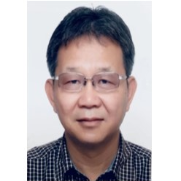Selected Papers from 2022 IET International Conference on Engineering Technologies and Applications
A special issue of Electronics (ISSN 2079-9292). This special issue belongs to the section "Systems & Control Engineering".
Deadline for manuscript submissions: closed (1 March 2023) | Viewed by 4852
Special Issue Editors
Interests: internet of things (IoT); intelligent systems; artificial intelligence (AI); integrated circuit design; opto-electronic materials and devices
Special Issues, Collections and Topics in MDPI journals
Interests: image/video processing on artificial intelligence (AI) technology; displays; 3D video processing for display technology; system-on-a-chip design for image/video processing consumer electronics; image/video signal processor design
Interests: fuzzy systems; neural networks; wireless networks; optimal learning algorithms; deep learning; reinforcement learning; image processing and robot system
Interests: network technology; pattern recognition and machine learning; IoT and data analysis; applications of artificial intelligence; deep learning; generative adversarial networks
Special Issues, Collections and Topics in MDPI journals
Special Issue Information
Dear Colleagues,
The 2022 IET International Conference on Engineering Technologies and Applications (IET ICETA 2022) (http://www.iet-iceta.org/) will be held on 14–16 October in Changhua, Taiwan. IET ICETA 2022 aims to provide a platform for experts, scholars, and researchers from all over the world to convene and share novel ideas on engineering fields. Authors of accepted papers are invited to submit the extended versions (at least 60% extension for the submissions) of their original papers and contributions.
The topics of interest include but are not limited to:
- Artificial Intelligence, machine learning, and deep learning
- Internet of Things
- Audio/video systems and signal processing
- Intelligent manufacturing
- Semiconductors and integrated circuits
- Green energy
- Mechatronic integration
- Communications and networks
- Automation and control
- Vehicle-to-Everything and autonomous vehicles
- Big data and clouds
- Advanced computing and data sciences
- RF and microwave
- Power devices and systems
- Security and privacy
- Computer software and hardware
- Consumer electronics
- Virtual reality, augmented reality, mixed reality, and cinematic reality
- Opto-electronic materials, devices, circuits, and systems
- Embedded systems
- Advanced materials and devices
- Sensors and actuators
- Sustainable development
- Technology and education
- Advanced technologies and applications
Prof. Dr. Yeong-Lin Lai
Prof. Dr. Yeong-Kang Lai
Prof. Dr. Hsuan-Ming Feng
Prof. Dr. Rung-Ching Chen
Guest Editors
Manuscript Submission Information
Manuscripts should be submitted online at www.mdpi.com by registering and logging in to this website. Once you are registered, click here to go to the submission form. Manuscripts can be submitted until the deadline. All submissions that pass pre-check are peer-reviewed. Accepted papers will be published continuously in the journal (as soon as accepted) and will be listed together on the special issue website. Research articles, review articles as well as short communications are invited. For planned papers, a title and short abstract (about 100 words) can be sent to the Editorial Office for announcement on this website.
Submitted manuscripts should not have been published previously, nor be under consideration for publication elsewhere (except conference proceedings papers). All manuscripts are thoroughly refereed through a single-blind peer-review process. A guide for authors and other relevant information for submission of manuscripts is available on the Instructions for Authors page. Electronics is an international peer-reviewed open access semimonthly journal published by MDPI.
Please visit the Instructions for Authors page before submitting a manuscript. The Article Processing Charge (APC) for publication in this open access journal is 2400 CHF (Swiss Francs). Submitted papers should be well formatted and use good English. Authors may use MDPI's English editing service prior to publication or during author revisions.
Keywords
-
artificial intelligence, machine learning, and deep learning
- internet of things
- audio/video systems and signal processing
- intelligent manufacturing
- semiconductors and integrated circuits
- green energy
- mechatronic integration
- communications and networks
- automation and control
- vehicle-to-everything and autonomous vehicles
- big data and clouds
- advanced computing and data sciences
- RF and microwave
- power devices and systems
- security and privacy
- computer software and hardware
- consumer electronics
- virtual reality, augmented reality, mixed reality, and cinematic reality
- opto-electronic materials, devices, circuits, and systems
- embedded systems
- advanced materials and devices
- sensors and actuators
- sustainable development
- technology and education
- advanced technologies and applications








